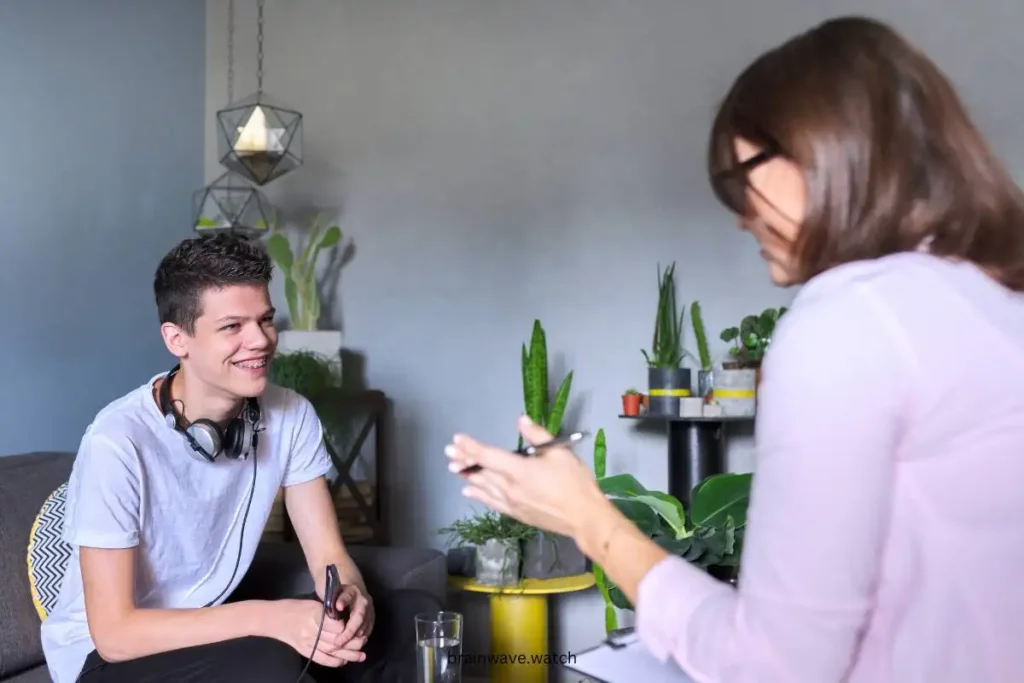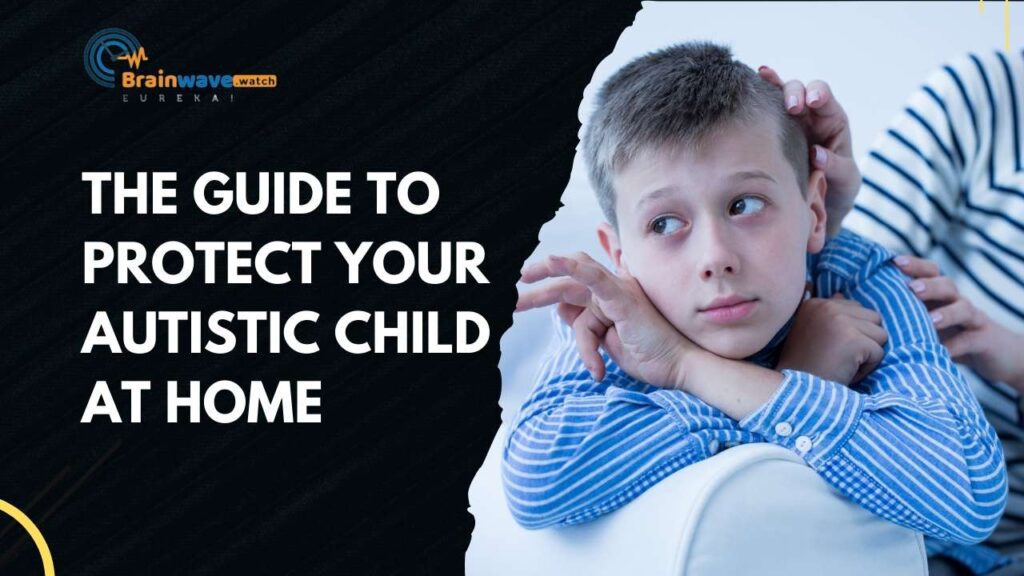ABA therapy provides a customized approach to help teenagers on the autism spectrum overcome challenges and reach their full potential. ABA techniques break down desired skills into small, achievable steps and motivate through rewards to reinforce positive behaviors. ABA can help autistic teens improve social skills, learning, flexibility, self-care, and more to thrive during their teenage years and beyond.
Applied Behavior Analysis (ABA) therapy is an evidence-based treatment that focuses on improving specific behaviors related to social skills, communication, reading, academics, self-care, and more. ABA therapy uses repetition and positive reinforcement to help people with autism spectrum disorder (ASD) build new skills and reduce problematic behaviors.
Autism spectrum disorder is a developmental disability that affects how people communicate and interact with others. People with ASD often have difficulties with social interaction, verbal and nonverbal communication, and repetitive behaviors. Autism symptoms and their severity vary widely across the spectrum. Teenagers with autism face extra challenges with peer relationships, school performance, emotional regulation, and the transition to adulthood.
What is ABA Therapy?
ABA (applied behavior analysis) therapy is a popular form of treatment for children with autism spectrum disorder (ASD). It is based on the principles of learning and behavior.
The goal of ABA therapy is to improve behaviors related to social skills, communication, academics, self-care, and more. It does this through positive reinforcement and repetition.
Some key aspects of ABA therapy include:
- Breaking down skills into small, manageable steps
- Providing clear instructions and modeling desired behaviors
- Using positive reinforcement (rewards) to motivate and reinforce positive behaviors
- Collecting data to track progress and adjust treatment accordingly
- Practicing skills in various settings to promote generalization
- Working in a one-on-one setting with a trained therapist/instructor
- Involving family members and teachers to promote consistency
The idea behind ABA is that desired behaviors can be taught through structured lessons and motivation. Over time, the goal is that positive behaviors become habits for the individual with autism.
Benefits of ABA Therapy for Teens
ABA therapy can provide several benefits for teenagers with autism spectrum disorder (ASD). Some of the key advantages include:
Improved Social Skills
One of the core symptoms of ASD is challenges with social interactions and communication. ABA therapy uses techniques like modeling, role-playing, and positive reinforcement to teach age-appropriate social skills. Teens can learn how to start conversations, take turns in dialogue, read body language and facial expressions, and more through ABA.
Self-care and Daily Living Skills
Becoming more independent with basic self-care tasks like getting dressed, brushing teeth, and feeding oneself is an important milestone in the teen years. ABA builds these daily living skills by breaking down tasks into small steps and providing prompts and rewards as teens master each component.
Enhanced Communication
Many teens with ASD struggle to communicate their wants, needs, thoughts, and feelings. ABA therapy develops communication and language abilities through picture exchange systems, sign language, speech therapy techniques, and assistive technology devices. The highly structured nature of ABA helps teens improve their functional communication capacities.
Structure and Routines
The consistency and repetition of ABA therapy help provide organization and predictability that teens with ASD often benefit from. Routines for activities like homework, chores, and self-care can be established through ABA. Structure in therapy carries over into structure in daily life, allowing for smoother transitions and more independent functioning.
ABA Techniques for Teens
ABA therapy for teens utilizes several key techniques to develop skills and behaviors. Some of the most common techniques include:
1. Modeling
Modeling involves demonstrating a desired behavior for the teen to imitate. The therapist acts as a role model, providing an example of appropriate actions or responses for the teen. Modeling helps teach social, play, communication, and life skills.
2. Shaping
Shaping is the process of reinforcing successive approximations of a target behavior. The teen is rewarded for steps that come closer and closer to the desired behavior. Shaping is useful for teaching complex skills by breaking them down into smaller, achievable steps.
3. Chaining
Chaining links together small units of behavior into a sequence. The teen learns to connect behaviors into a chain to accomplish larger tasks. Backward chaining starts with the last step, while forward chaining begins with the first step.
4. Reinforcement
Reinforcement, through rewards and praise, increases desired behaviors. ABA programs use positive reinforcement, such as tokens, prizes, and social rewards. By rewarding good behaviors, teens are motivated to continue demonstrating them.
5. Task Analysis
Task analysis breaks down skills into components. Each step required to complete a task is taught and mastered before moving to the next step. Task analysis develops chained behaviors central to daily living.
6. Discrete Trial Training
Discrete trial training teaches skills in a structured, repetitive format with a clear beginning and end points. The therapist uses prompts and guides the teen through trials presented in a planned sequence. Accuracy is recorded to monitor progress.
Developing Goals for Teen ABA Therapy
Setting appropriate goals is crucial for successful ABA therapy outcomes in teenagers. Goals should be customized for each teen based on their unique needs, challenges, interests, and aspirations. It’s important to balance short-term goals that can be achieved in weeks or months, with long-term goals that may take years to accomplish.
Some examples of short-term goals could include: improving conversational skills, coping with anxiety in social situations, learning to ask for help, or managing emotions. Long-term goals may focus on developing self-care and independent living skills, succeeding academically, building meaningful relationships, securing employment, or preparing for postsecondary education.
When developing goals, ABA therapists should collaborate closely with the teen, parents, and any other care providers. Active teen participation helps ensure buy-in and motivates them to work hard in therapy. Goals should be positively framed, play to the teen’s strengths, and break down larger milestones into manageable steps. Goals should be monitored and updated regularly to maintain relevance as the teen develops.
Setting impactful goals requires understanding the teen’s unique needs, challenges, interests, and aspirations. With appropriate goals guiding the therapy, ABA can help teens gain skills critical for independence and success into adulthood.
Transition ABA Therapy
As teens with autism approach adulthood, a key focus of ABA therapy becomes developing skills needed for independent living. This “transition ABA” aims to help teens gain job skills, household skills, and community/social skills that enable them to function successfully as adults with minimal lifelong therapy or support.
Some important goals of transition ABA include:
- Developing vocational skills and preparing for employment or higher education. Teens may undergo job training, internships, or apprenticeships to build real-world skills.
- Learning household responsibilities like cooking, cleaning, shopping, and home maintenance. Teens practice these essential life skills and build habits to live independently.
- Building money management abilities, including budgeting, banking, and financial literacy. Teens learn how to handle money responsibly.
- Improving social and community engagement skills. Teens work on making friends, conversing, and participating in group activities or events.
- Travel training for using public transportation or private vehicles independently. Teens gain mobility and freedom.
- Understanding legal issues, rights, and responsibilities as an adult on the autism spectrum.
The transition to adulthood can be challenging for any teen. ABA therapy helps autistic teens master critical skills during this period to reduce dependence on lifelong therapy or caregiver support. With the right preparation and training, autistic teens can successfully transition to adult independence.
ABA Therapy Structure for Teens
ABA therapy for teenagers is usually conducted for 30-40 hours per week. It can take place in 1-on-1 sessions between the teen and the therapist or a group setting with multiple teens and therapists.
The therapy occurs in a variety of environments, including clinics, schools, the teen’s home, and community settings. Conducting ABA therapy in multiple environments allows the teen to generalize the skills and behaviors they learn across different real-world situations.
Some key elements of how ABA therapy is structured for teens include:
- 1-on-1 sessions – The teen works directly with a therapist on goals tailored to their needs. This allows for highly customized therapy.
- Group sessions – The teen practices skills and behaviors with peers. Group sessions teach social skills and appropriate group behaviors.
- Clinic-based – ABA clinics provide dedicated therapy spaces stocked with materials. This is useful for introducing and drilling new skills.
- School-based – Applying ABA strategies in school helps teens practice skills where they need them most. Consultation with school staff helps ensure consistency.
- Home-based – Home sessions focus on generalizing skills and behaviors to the teen’s natural environment. Family members often participate.
- Community-based – Community trips help teens practice skills in real-world situations like restaurants, stores, and other public places.
Using a variety of settings for a teen’s 30-40 hours per week of ABA therapy helps ensure complete learning across different environments. The teen learns to apply their new skills and behaviors flexibly.
Working with Teens in ABA Therapy
Working with teenagers presents unique challenges in ABA therapy compared to younger children. As children grow into adolescence, their interests, perspectives, and needs change. ABA therapists must adapt their techniques to engage and motivate teens effectively.
A core component of working with teens is understanding the importance of positive reinforcement. Teenagers often resent activities perceived as “childish” or boring. ABA therapists should identify motivators that appeal to the teen’s interests. Reinforcing effort and participation, rather than just task completion, is key.
Collaborating with the teen is also vital. Teens want more autonomy and independence. ABA therapists can involve teens in setting therapy goals, tailoring rewards, and evaluating progress. Fostering self-regulation skills is also important, guiding teens to reflect on their behavior and emotions.
The most successful teen ABA therapy balances structure with flexibility. Strict adherence to programs designed for younger children often backfires with teens. Therapists must be ready to adjust motivational strategies, session activities, and behavioral plans as the teen develops. Maintaining strong rapport through mutual understanding and respect enables impactful ABA therapy for teens.
ABA Therapy Effectiveness for Teens
Research shows ABA therapy can be highly effective for teenagers with autism, leading to significant improvements in communication, social skills, academics, and behavior.
Multiple studies have demonstrated that ABA principles and techniques lead to positive outcomes for teens on the autism spectrum. For example, a meta-analysis published in 2009 examined 11 studies on ABA-based interventions for adolescents and adults with autism. On average, the participants made gains in IQ, receptive and expressive language, daily living skills, and social functioning after receiving ABA therapy.
The benefits of ABA therapy extend beyond the teenage years as well. A long-term study published in 2014 followed autistic children who had received ABA therapy for two years. When re-evaluated as young adults, the majority were living independently, maintained jobs, and had friendships – positive results attributed to their early intensive ABA intervention.
While ABA therapy is often most effective when started during early childhood, it can still provide significant improvements for older children and teens. Even starting ABA in the teenage years can lead to gains in communication, social skills, academics, adaptive behaviors, and quality of life. The key is providing individualized ABA goals tailored to the teen’s needs and transition plans.
Conclusion
ABA therapy is the most widely used and extensively researched treatment approach for autism spectrum disorder. Decades of studies have demonstrated its effectiveness in helping autistic individuals, including teenagers, learn new skills and reduce problem behaviors.
While ABA looks different for adolescents compared to young children, it can still provide immense benefits during the teenage years. ABA techniques help teens improve communication, social skills, flexibility, self-care, academics, job skills, and more. This can greatly improve their quality of life and prepare them for the transition to adulthood.







